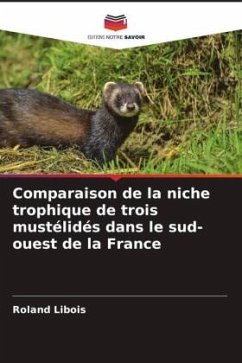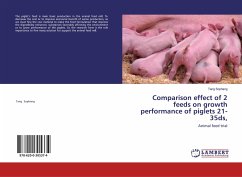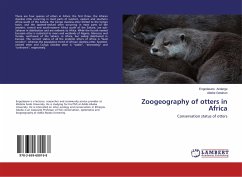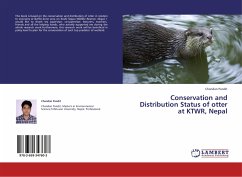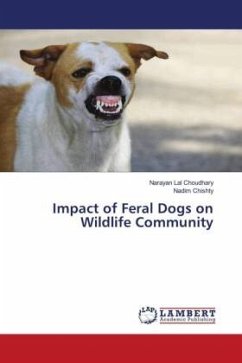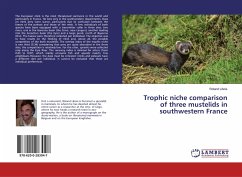
Trophic niche comparison of three mustelids in southwestern France
Versandkostenfrei!
Versandfertig in 6-10 Tagen
17,99 €
inkl. MwSt.

PAYBACK Punkte
9 °P sammeln!
The European mink is the most threatened carnivore in the world and particularly in France. He lives only in the southwestern departments. Data on mink prey were scarce, particularly due to confusion between the faeces of the polecat and those of the mink. A few individuals of both species have been equipped with a transmitter collar in three sites: two rivers, one in the Garonne basin (the Ciron, near Langon), another leading into the Arcachon basin (the Eyre) and a large pond, north of Bayonne (Orx). The faeces were therefore collected per individual. The objective was to have results on the...
The European mink is the most threatened carnivore in the world and particularly in France. He lives only in the southwestern departments. Data on mink prey were scarce, particularly due to confusion between the faeces of the polecat and those of the mink. A few individuals of both species have been equipped with a transmitter collar in three sites: two rivers, one in the Garonne basin (the Ciron, near Langon), another leading into the Arcachon basin (the Eyre) and a large pond, north of Bayonne (Orx). The faeces were therefore collected per individual. The objective was to have results on the feeding of mink and, above all, the possible competition of the both mustelids. The overlap index of the trophic niche is one third (0.34) considering that prey are quite abundant in the three sites, the competition is relatively low. For the otter, spraints were collected only along the Eyre River. The recovery index is minimal for otters (from 0.03 to 0.07), which mainly consume fish and aquatic insects, few amphibians.However, the data must be criticized: minks and polecats have a different diet per individual. It cannot be excluded that these are individual preferences.



